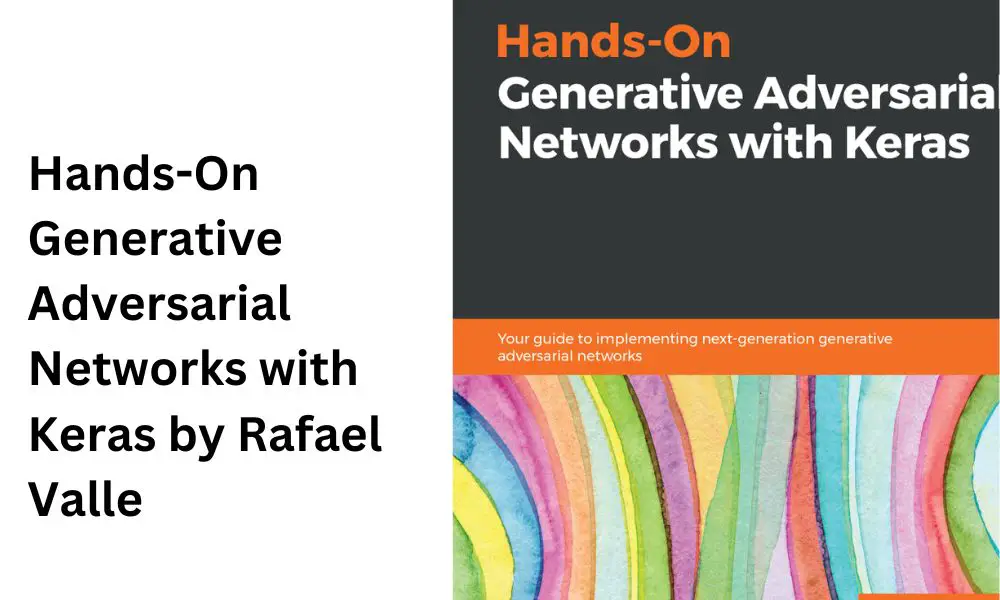Table of Contents
Introduction
In the rapidly evolving field of machine learning and deep learning, Generative Adversarial Networks (GANs) have emerged as a groundbreaking technique with wide-ranging applications. In this article, we will delve into the book “Hands-On Generative Adversarial Networks with Keras” by Rafael Valle. This book serves as a comprehensive guide for those looking to understand and implement GAN architectures using Python and the Keras library.
Book Summary
“Hands-On Generative Adversarial Networks with Keras” introduces readers to the world of GANs, explaining their fundamental concepts, applications in artificial intelligence, and their potential in various domains. The book takes a practical approach, providing readers with easy-to-follow examples that enable them to build, evaluate, and improve their own GAN models.
The author starts by covering the basics of deep learning and generative models, ensuring that readers have a solid foundation before diving into GANs. From there, the book explores various GAN architectures, including conditional GANs, the progressive growing of GANs, and their applications in image synthesis, natural language generation, and speech enhancement.
Throughout the book, readers are introduced to state-of-the-art models in the field, giving them valuable insights into the latest advancements and real-world applications of GANs. The book concludes with a glimpse into the future of GANs and their potential impact on visual and sonic arts.
Book Information
Overview of the Book
The book starts with an introduction to deep learning and generative models, setting the stage for the subsequent chapters’ exploration of GANs. The chapters are structured in a logical manner, with each building upon the concepts covered in the previous ones. The content is well-organized, making it easy for readers to follow the author’s explanations and examples.
Key Concepts and Techniques
The book covers essential concepts related to GANs, including how they work, their advantages, and the challenges involved in working with them. Readers will gain an understanding of conditional GANs, space manipulation, and embedding to control the output of GANs. Moreover, they will explore how GANs can be applied to computer vision, natural language processing (NLP), and audio processing.
Writing Style and Clarity
The author’s writing style is academic and at times overly technical, which may make it challenging for readers with limited background knowledge in deep learning and machine learning. Additionally, the excessive use of commas can make sentences seem convoluted and hinder comprehension.
Strengths of the Book
The book shines in its comprehensive coverage of various GAN architectures and practical examples. It provides readers with the knowledge and tools they need to build and deploy GANs for diverse real-world applications. The inclusion of real-life use cases and datasets enhances the book’s practicality.
Areas for Improvement
While the book claims to be accessible to readers with a basic understanding of Python, it quickly delves into complex mathematical concepts, potentially alienating beginners. More introductory material on neural networks and machine learning fundamentals could improve the book’s approachability.
Book Details
| Publisher | Packt Publishing |
|---|---|
| Publication Date | May 3, 2019 |
| Language | English |
| Paperback | 272 pages |
| ISBN-10 | 1789538203 |
| ISBN-13 | 978-1789538205 |
| Item Weight | 1.04 pounds |
| Dimensions | 7.5 x 0.62 x 9.25 inches |
Target Audience
“Hands-On Generative Adversarial Networks with Keras” is primarily intended for machine learning practitioners, deep learning researchers, and AI enthusiasts. A working knowledge of Python is expected as the book heavily relies on its usage.
Conclusion
In conclusion, “Hands-On Generative Adversarial Networks with Keras” is a valuable resource for those looking to explore and implement GAN architectures using Python and Keras. It covers a wide range of GAN models and their applications in various domains. The book’s hands-on approach, practical examples, and real-world use cases make it a valuable addition to the library of any machine learning enthusiast.
Frequently Asked Questions (FAQ)
- Is this book suitable for beginners in machine learning?
While the book claims to be accessible to those with basic Python knowledge, it quickly introduces advanced concepts, making it more suitable for readers with some background in machine learning and deep learning. - Are the code examples in the book easy to follow?
Some readers may find the code examples challenging to follow due to limited explanations and a lack of step-by-step breakdowns. - Does the book cover cutting-edge advancements in GANs?
Yes, the book provides insights into state-of-the-art models and the latest advancements in the GAN framework. - What kind of datasets are used in the book’s examples?
The book uses various datasets relevant to the discussed applications, including image datasets, text datasets, and audio datasets. - Is the book solely focused on using Keras for GAN implementations?
Yes, the book primarily focuses on implementing GAN architectures using Python and the Keras library. Other frameworks are not extensively covered.
